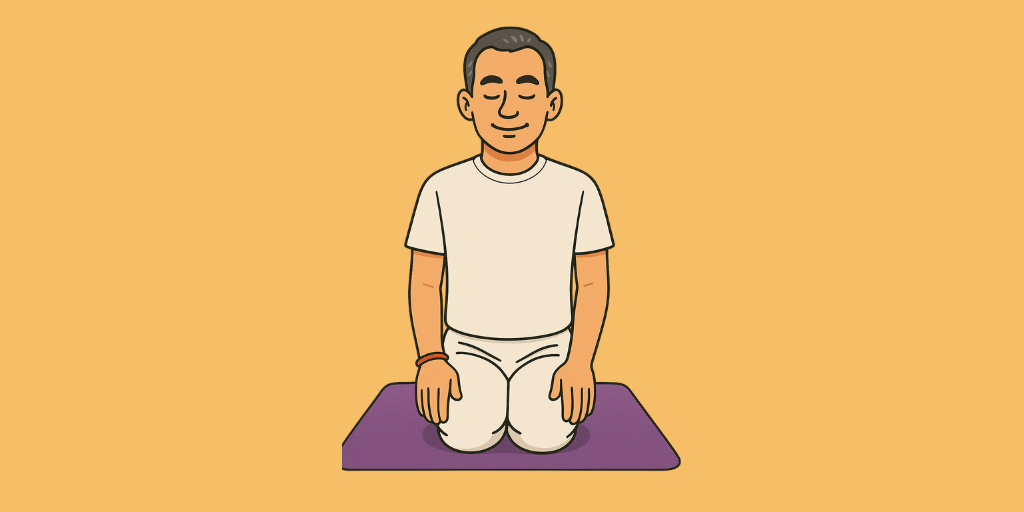Sanskrit Name: संकटासन
English Name: Knee to Chest Pose
Description:
Sankatasana is a seated yoga posture aimed at assisting practitioners in overcoming both mental and physical challenges. The name signifies that engaging in this asana can foster the inner resilience and concentration needed to tackle life’s difficulties. Sankatasana is derived from two Sanskrit terms: Sankata (संकट) translates to “difficulty,” “trouble,” or “obstacle,” while Asana (आसन) means “pose” or “posture”. Thus, Sankatasana can be interpreted as the “Pose for Overcoming Difficulties” or “Pose to Remove Obstacles.” Although it is a relatively modern addition to yoga practices and is not found in classical texts like the Hatha Yoga Pradipika or Gheranda Samhita, the concept of Sankata (obstacle) aligns with the yogic principle of overcoming or transcending challenges, known as Vighna in Sanskrit. Many traditional poses, especially in Hatha Yoga, aim to enhance strength, flexibility, and focus, enabling practitioners to overcome their limitations.
Medical Conditions(Relief):
Sankatasana, also known as the “Knee to Chest Pose,” offers several therapeutic benefits, including:
- Improves Digestion : This pose helps stimulate the digestive organs, promoting better digestion and alleviating issues like constipation.
- Relieves Stress and Anxiety : By focusing on breath and the physical posture, Sankatasana can help calm the mind, reducing stress and anxiety levels.
- Strengthens Core Muscles : Engaging the abdominal muscles during this pose strengthens the core, which is essential for overall stability and balance.
- Enhances Flexibility : Regular practice can improve flexibility in the hips and lower back, reducing tension and discomfort in these areas.
- Alleviates Lower Back Pain : The gentle compression of the abdomen and stretching of the lower back can help relieve pain and discomfort in the lumbar region.
- Promotes Circulation : This asana encourages better blood flow throughout the body, which can enhance overall health and vitality.
Benefits:
Incorporating Sankatasana into a regular yoga practice can contribute significantly to physical and mental well-being. Sankatasana, also known as the “Crisis Pose,” can be beneficial for various medical conditions. It aids in alleviating stress and anxiety, promoting relaxation and mental clarity. Additionally, this asana can help improve posture, which is particularly useful for individuals with back pain or spinal issues. It also enhances lung capacity, making it beneficial for those with respiratory conditions. Furthermore, practicing Sankatasana can assist in digestive disorders by stimulating the abdominal organs, leading to better digestion and relief from bloating. Overall, this pose supports both physical and mental well-being.
Medical Conditions(Avoid):
Sankatasana, or the “Knee to Chest Pose,” should be avoided in the following medical conditions:
- Knee Injuries : Individuals with knee injuries or chronic pain should avoid this pose as it may exacerbate their condition.
- Hernia : Those with a hernia should refrain from practicing Sankatasana, as the pressure on the abdomen can worsen the condition.
- Severe Back Pain : People suffering from severe back pain or spinal issues should avoid this pose to prevent further strain.
- Pregnancy : Pregnant individuals should avoid this asana, especially in later trimesters, due to the pressure it places on the abdomen.
- Recent Surgery : Anyone who has undergone recent abdominal or hip surgery should not practice this pose until fully healed.
Always consult a healthcare professional before engaging in new physical activities, especially with pre-existing conditions.

